#colonies of america
Text
In the middle of the 20th century, one woman became the face of the movement for Puerto Rican self-determination. Her name was Lolita Lebrón, and in an effort to draw the world's attention to Puerto Rico's colonial subjugation by the United States, she and a handful of men opened fire in the U.S. House of Representatives.
After the United States Capitol was stormed by insurrectionists on January 6th, 2021, Amarilis Rodriguez questioned how long the domestic terrorists would serve in prison, considering that Lebrón and her fellow pro-independence activists served 25 years (after being sentenced to even more.) Will the United States legal system punish insurrection as harshly as it punishes anti-colonialism?
Although Puerto Rico remains a US territory today, the independence movement that Lebrón was a part of has never disappeared. Lolita Lebrón and her collaborators expected to die in the attack, and although five congressmen were wounded, they claimed that they had never intended to kill anyone. This is the story of the 1954 attack on the Capitol and the woman who led it.
Who was Lolita Lebrón?

Lightfoot/Getty Images
Born on November 19th, 1919, Dolores "Lolita" Lebrón Sotomayor was the fifth and final child of a financially insecure family living in Lares, Puerto Rico. Her father tragically died at the age of 42, when Lebrón was a teenager, due to an inability to access sufficient medical care, and their financial situation only worsened afterwards.
Although she may have had some nationalist ideas, during her youth she didn't keep up with politics or activism. But according to Latinas in the United States, although Lebrón didn't take "much notice of Puerto Rico's political situation" while she was growing up, after moving to New York City, she joined the Puerto Rican Nationalist Party chapter in the early 1940s.
However, one event that is said to have resonated with Lebrón was the Ponce Massacre of 1937, where, according to the Zinn Education Project, 19 Nationalists were massacred by the police and over 200 others were wounded. The Guardian claims that the event "radicalized" Lebrón, but she never explicitly said that herself. Lebrón even claimed that she only ended up knowing about the massacre "because someone came to our house who had lost a relative in it. I had heard about a man named Pedro Albizu Campos but I never knew him personally."
The United States and Puerto Rico

Hulton Archive/Getty Images
Before the Spanish colonized Puerto Rico, the island was inhabited by the Taíno, who were a subset of the Arawak people. But after the Spanish invaded in the 15th century, they ended up subjugating the island for almost 300 years. Then in the 1800s, according to National Geographic, the people of Puerto Rico started advocating for self-determination and self-governance.
Although the Spanish ended up allowing the island relatively more autonomy, the United States invaded Puerto Rico on July 25, 1898 during the Spanish-American War. And in the subsequent peace treaty, signed December 1898, the Spanish gave the colony to the United States. According to Boricua Power, almost as soon as the United States took control of Puerto Rico, they started encouraging people from the island to emigrate to the United States, Hawaii, Cuba, and Santo Domingo. The United States government pushed the perception that Puerto Ricans were "a good source of labor," though often the jobs that Puerto Ricans traveled to pursue "didn't live up to expectations and promises."
Puerto Rican people who'd emigrated frequently protested their unjust working conditions and the devaluation of their labor. However, even cigar makers in New York City, which was an industry that was "the highest-paid, best organized, [and] most independent," found its work rendered "obsolete, unemployed, and poor" by the tobacco employers. During this entire time, Puerto Ricans continued to demand the right to self-governance.
The Gag Law and the Smith Act
Fox Photos/Getty Images
Meanwhile, on the island itself, the United States sought to suppress any and all nationalistic and pro-independence activity. On June 11, 1948, Jesús T. Piñero, a Puerto Rican man appointed governor by the United States, signed a bill into law that would become known as the Ley de la Mordaza, or the Gag Law.
According to War Against All Puerto Ricans, Law 53, as it was known in the legislation, was entirely intended to disrupt the Puerto Rican independence movement. It made it illegal to speak in favor of independence, write in favor of independence, sing a patriotic tune, or even display the Puerto Rican flag, per Mother Jones. The penalty for breaking this law was a fine of $10,000 and/or 10 years' imprisonment. And when the Puerto Rico colonial government adopted the pro-independence flag in 1952, they changed the blue color on the flag to make it more similar to the United States flag, nullifying the flag's symbolism, "whether intended or not."
Some also referred to the Gag Law as "the Little Smith Act" since it resembled the Smith Act from the mainland United States, which had been intended to suppress communist movements. A big component of both of these Acts made it a felony to "advocate for the violent overthrow of the government" or to be associated with such an organization.
The 1950 uprisings in Puerto Rico
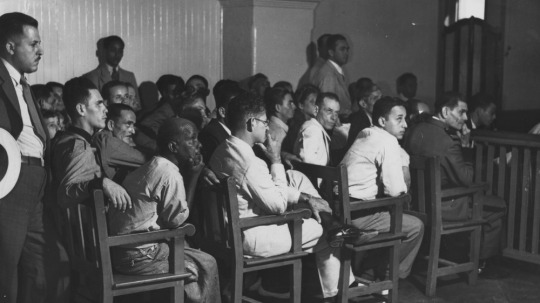
Rosskam/Getty Images
Over the course of four days in 1950, there were several uprisings in Puerto Rico that were led and organized by Pedro Albizu Campos, the president of the Nationalist Party. Along with staging uprisings in eight different towns (Arecibo, Jayuya, Mayagüez, Naranjito, Peñuelas, Ponce, San Juan, and Utado), there were attempts to assassinate both Governor Luis Muñoz Marín of Puerto Rico and President Harry S. Truman of the United States.
According to Introduction to Latino Politics in the U.S., the nationalist groups carried the Puerto Rican flag around and in turn were "attacked by U.S. bomber planes from the air and by U.S. artillery on the ground." Oscar Collazo and Griselio Torresola, who were living in the United States, made an unsuccessful attempt to assassinate President Truman at Blair House on November 1st, 1950. In response to the uprisings, President Truman allowed Puerto Rico to hold a referendum over the creation of a new constitution. After it passed, the new constitution was implemented by July 1952.
According to the Encyclopedia of Activism and Social Justice, Albizu Campos was caught and sentenced to 80 years imprisonment the following year. Although he was pardoned two years later by the governor he tried to assassinate, the pardon was revoked after Lolita Lebrón's attack on the U.S. House of Representatives in 1954.
Lolita Lebrón moves to New York City

Orlando/Getty Images
In the 1940s, Lolita Lebrón moved to New York City and found it difficult to find work. Although she was able to be hired as a seamstress several times, whenever she confronted the discrimination against Puerto Ricans, she was fired. According to Lebrón herself, "After three days of looking for work, getting lost in the trains, walking in the snow, without money for lunch or shelter, I had to deny that I was Puerto Rican in order to have a job."
In response to the prejudice and racism she experienced, Lebrón joined the Puerto Rican Nationalist Party in 1946 and started promoting both feminist and socialist values within the organization. According to Latina, she soon became incredibly influential in the organization and was promoted to top positions like executive delegate and vice president.
Albizu Campos was the party's president and Lebrón had learned everything she could about its founder. According to The Guardian, the two began to correspond as Lebrón took on more and more responsibility within the organization. And in 1954, Lebrón was asked by Albizu Campos to come up with "strategic targets" for an attack. Lebrón chose the United States Congress as their target.
Deciding to attack Washington, D.C.
Shutterstock
In the new constitution of Puerto Rico, the official name of the island was made Estado Libre Asociado, or Commonwealth of the United States. According to Women on the Edge: Ethnicity and Gender in Short Stories by American Women, although this allowed people in Puerto Rico to elect local political officials, the description of "commonwealth" was "an ambiguous political designation" that kept the island "situated within American politics."
According to CENTRO Journal, as with the Guyana Uprising, the attack on the United States government wasn't "so much an attempt to seize power as it was 'a supreme act of protest to attract the attention of the world to the cause of Puerto Rico's independence.'" The ultimate goal was always to throw off the colonialist yoke, but even the note found in Lolita Lebrón's purse after the attack stated that the attack was "aimed at making the Puerto Rican plea heard throughout the world, as no one seemed to pay attention to the sufferings of her people." She reiterated this statement years later from prison, stating, "Attacking the U.S. in its own heart, its own entrails, was Puerto Rico's last recourse... because the island could not arm itself... and confront the U.S. in a traditional war. We made our war the only way we're able to."
Lolita Lebrón recruited Irving Flores, Rafael Cancel Miranda, and Andres Figueroa Cordero for the mission and on March 1st, 1954, they set out for Washington, D.C.
'¡Que Viva Puerto Rico Libre!'

Peter Keegan/Getty Images
On the day that Lebrón, Flores, Cancel Miranda, and Figueroa Cordero traveled from New York City to Washington, D.C. and entered the United States House of Representatives, there were two imperialist topics on the agenda. According to The Young Lords, Puerto Rico was one of the topics, and the other was the Chamizal district between Mexico and Texas, which the United States government didn't want to give back to the Mexican government.
The group waited in the visitor's gallery, and around noon, Lebrón shouted, "¡Que Viva Puerto Rico Libre!" and opened up the Puerto Rican nationalist flag. They all opened fire, firing both into the ceiling and the House floor. Five congressmen were wounded, although no one died in the attack. According to Latina, they had "no intentions of murdering anyone during their attack. Rather, they had prepared to die in their struggle for liberation."
When they were captured, Lolita Lebrón insisted that the men weren't responsible for the attack and that she was the sole instigator, but they were all given lengthy sentences.
And although The Guardian notes "Extraordinary as it seems today, the four Puerto Rican radicals had no difficulty in entering the visitors' gallery of the House of Representatives armed with their Lugers," it was revealed in the attempted coup of 2021 that maybe it's not actually that extraordinary.
Lolita Lebrón's capture and trial

Shutterstock
Lolita Lebrón and her fellow nationalists were captured almost immediately, although one was able to escape briefly before being apprehended. The trial started three months later, lasted 12 days, and on June 16th, 1954, they were all found guilty. According to The New York Times, while Cancel Miranda, Figueroa Cordero, and Flores were sentenced to 25 to 75 years in prison, Lebrón was sentenced to only 16 to 50 years. Since Lebrón had fired at the ceiling rather than the House floor, she was cleared of "assault with intent to kill," which is why she had a lesser sentence.
Although the defense counsel attempted to bring up the question of the nationalist's sanity, even claiming that the "appellants' adherence to an organized minority group in Puerto Rico is said to indicate irrationality," the defendants actively refused an insanity defense. Per the Washington Post, during her trial, Lebrón insisted that she was "being crucified for the freedom of my country." In another trial, an additional six years were added to all the shooters' sentences for "seditious conspiracy."
Lebrón also lost her 12-year-old son during the trial, although no one knew until she was testifying on the stand, and she recounted "what her life had been like with her child and the meaning of his loss."
Continuing to protest in prison

Shutterstock
Lolita Lebrón was imprisoned at the Federal Correctional Institution for Women in Alderson, West Virginia. According to Latinas in the United States, most of her time in prison was spent writing poetry, praying, sewing uniforms, and advocating for the rights of those imprisoned alongside her.
Helping organize a number of hunger strikes in the prison, Lebrón was furious that "women were intimidated and placed in isolation just to keep them in line." She also "refused to accept the validity of her conviction" and refused to apply for parole unless her fellow nationalists were also going to be freed. Insisting that she wouldn't leave prison for anything less than a presidential pardon, she devoted herself to her religion.
In 1978, Assata Shakur was transferred to Alderson and the two political prisoners crossed paths. They knew of the other's activism and admired one another, and at the moment they met there was an outburst of joy in a traditionally austere place. As their eyes recognized one another in the middle of prison, they called out the other's name in happiness and "hugged and kissed each other." It was an auspicious meeting, since the following year both Shakur and Lebrón left prison, one by escape and the other by pardon, respectively.
President Carter commutes Lolita Lebrón's sentence
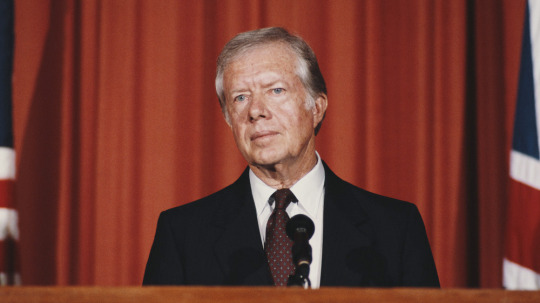
Fox Photos/Getty Images
In 1978, President Jimmy Carter started reviewing the cases of the nationalists and pardoned Figueroa Cordero first since he had been diagnosed with cancer. The following year, President Carter also commuted the sentences of Lebrón, Flores, and Cancel Miranda after they had been imprisoned for 25 years.
Although some claim that this pardon came out of the pressure from political circles, academics, and the Catholic Church in Puerto Rico, the Washington Post claims that the pardon was "widely suspected to have been part of a prisoner swap to release CIA agents jailed in Cuba." However, according to Women of Color, in Solidarity, the governor of Puerto Rico at the time, Carlos Romero Barceló, was against the pardon because he claimed that it would "encourage terrorism and undermine public safety."
Although Lolita Lebrón was initially treated as a heroine when she was released from imprisonment, some of her followers abandoned her when they became aware of "her pacifist views and her devotion to the Catholic faith." In her autobiography, Shakur also notes how "anticommunist and antisocialist" Lebrón was at the time of their meeting.
Lolita Lebrón's continued activism

Gerald Lopez-cepero/Getty Images
Out of prison, Lolita Lebrón continued her activism for Puerto Rico's self-determination. According to The Guardian, although she recognized the economic benefits of living under American colonial rule, Lebrón "regarded freedom from foreign interference as more important than material well being."
In 2001, Lebrón was arrested twice during the struggle to remove the U.S. Navy from the island of Vieques, which it was using as a bombing range. She was 81-years-old at the time, and although she served 60 days at one point, their protests were ultimately successful.
According to Radical Women, on March 8th, 2008, she led a protest demanding for Puerto Rico's right to self-determination, saying, "We want everyone to know that in Puerto Rico, we women are fighting for our rights as workers, we are fighting for a healthy environment, for poor and marginalized communities, for the freedom of the political prisoners, the well-being of children, for peace, for the defense of our culture and all the rights they intend to take from us."
The end of Lolita Lebrón's life and her legacy
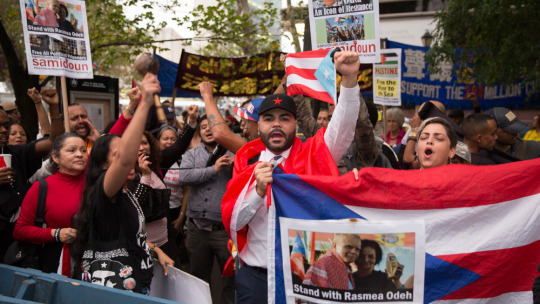
Kevin Hagen/Getty Images
On August 1st, 2010, Lolita Lebrón died as a result of a respiratory disease. But according to Latina, her legacy continues to be celebrated amongst Puerto Ricans. Her portrait is illustrated in murals across Puerto Rico as well as in neighborhoods in Chicago and New York. According to Maria de Lourdes Santiago, a member of the Puerto Rican Independence Party, Lebrón was "the mother of the independence movement."
Lebrón claimed that she had renounced violence due to her religious convictions, and she maintained the new pledge of nonviolence for the rest of her life. However, Lebrón stated that although she herself would not take up arms, "I acknowledge that the people have a right to use any means available to free themselves."
Although votes for independence in Puerto Rico typically garner up to 5 percent of the vote and statehood accounts for up to 50 percent of the vote, Puerto Rico remains a colony of the United States empire. And Lolita Lebrón never repented for her actions. When released, she said "We didn't do anything that we should regret. Everyone has the right to defend their right to freedom that God gave them."
#Puerto Rico#Lolita Lebron#Puerto Rican Independence Party#us colonialism#colonies of america#Free Puerto Rico#The 1954 Attack On The Capitol And The Woman Who Led It
15 notes
·
View notes
Text
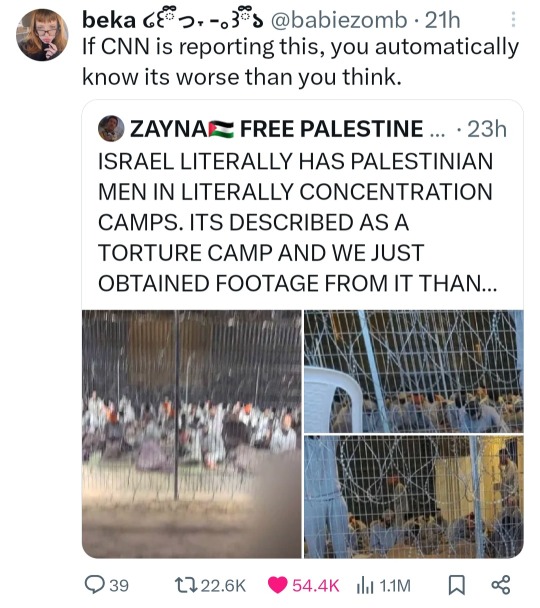
#palestine#gaza#free palestine#free gaza#jerusalem#rafah#egypt#lebanon#yemen#middle east#human rights#united nations#politics#colonialism#israel#america#us politics#democrats#joe biden#us elections#eurovision#concentration camps#genocide
21K notes
·
View notes
Text
Don't lose focus! Yes, the university campus protests are excellent, but remember WHY and WHAT they are protesting.
from Bisan, 27/Apr/2024:

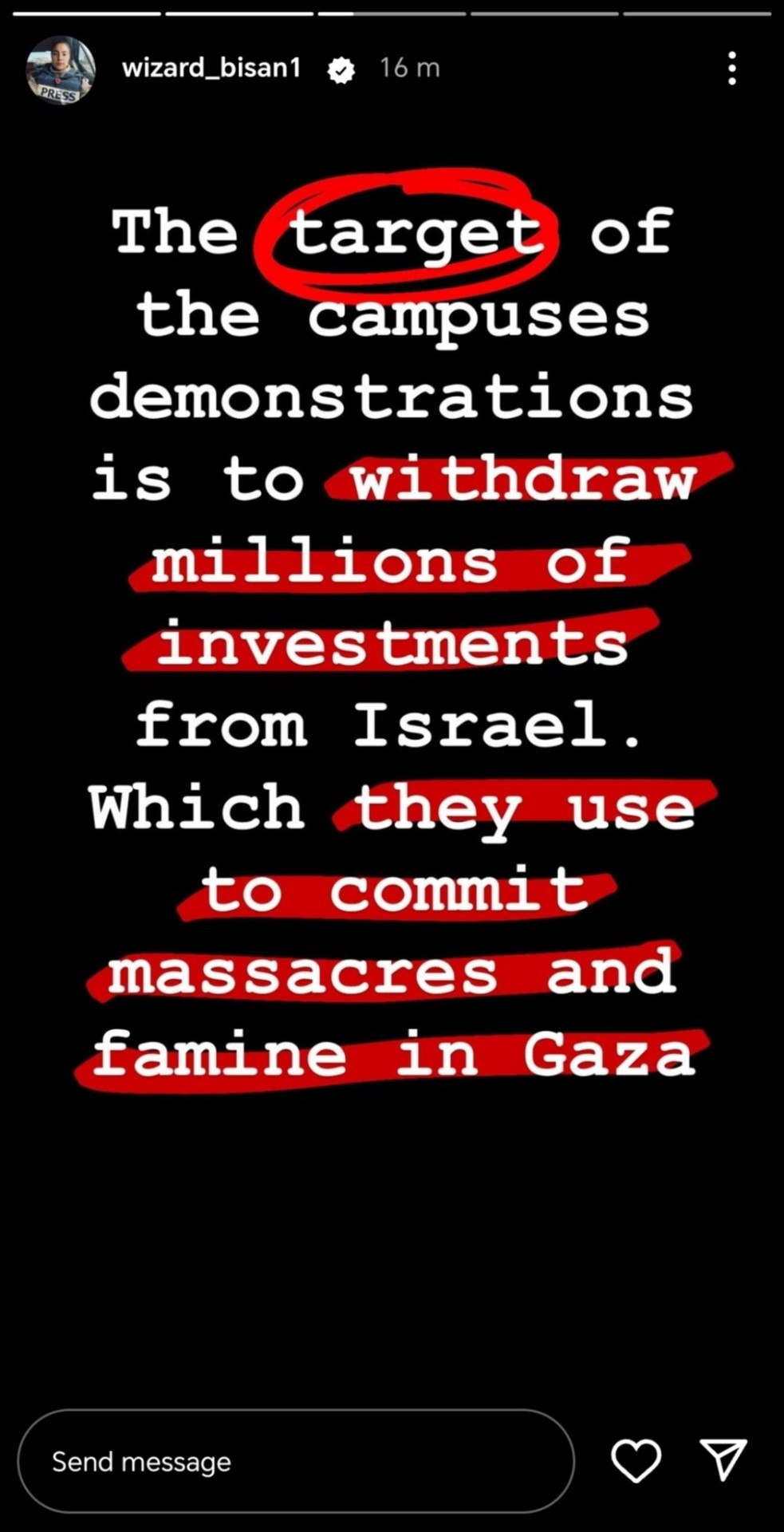


#important#please reblog#protest#keep protesting#protest for palestine#palestine#free palestine#gaza#free gaza#from the river to the sea palestine will be free#i stand with palestine#rafah#save rafah#human rights#permanent ceasefire#ceasefire now#fuck israel#fuck america#fuck imperialism#fuck colonialism#colombia university
12K notes
·
View notes
Text






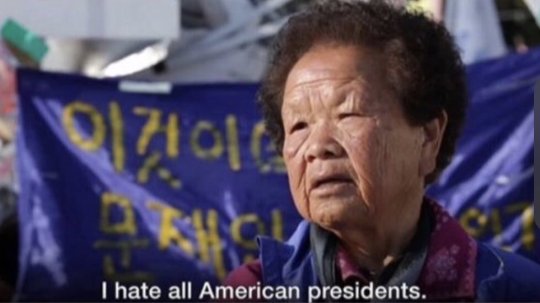
I fucking hate the United States moodboard
#scarletposts#anti america#marxist leninist#communism#anti imperialism#anti colonialism#fuck the usa
12K notes
·
View notes
Text

"Cellar with supplies"
Soviet Union
c. 1970s
#soviet union#latin america#latino#propaganda#colonialism#anti imperialism#imperialism#capitalism#united states#america#usa#vintage#poster#south america
3K notes
·
View notes
Text
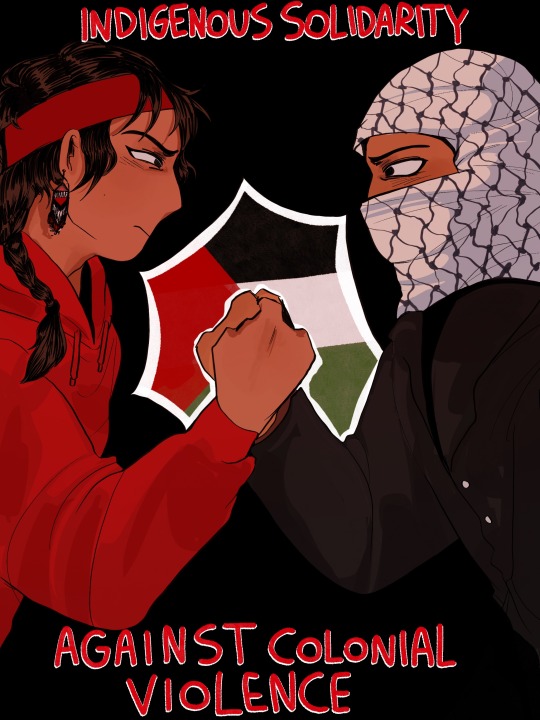
landback everywhere
#free palestine#palestine#ndn#indigenous artist#indigenous solidarity#death to israel#death to america#free gaza#indigenous rights#As a native if you are a native and not supporting Palestine then you are no better than the white man#I mean that#Look your ancestors in the eye and tell them you support a colonial genocide
2K notes
·
View notes
Text
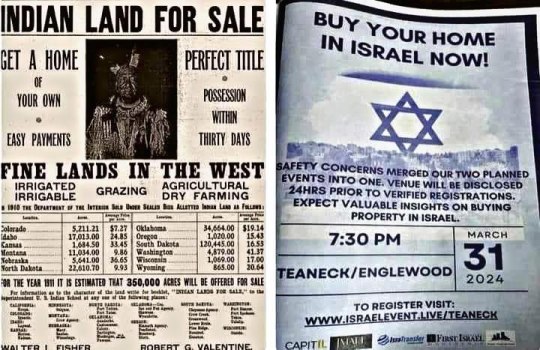
Colonialism
#Colonialism#colonialism#colonial violence#colonization#colonizers#colonial america#colonial history#colonialization#ausgov#politas#auspol#tasgov#taspol#australia#fuck neoliberals#neoliberal capitalism#anthony albanese#albanese government#usa news#usa politics#usa is a terrorist state#usa#american indian#american#america#palestine#israel#israhell#anti colonialism#anti colonization
908 notes
·
View notes
Text

#free palestine#israel#colonialism#anti colonialism#news#democrats#republicans#politics#gaza#biden#colonial violence#colonial america
422 notes
·
View notes
Text
Kids with the hardest childhood imaginable, having traveled half the country to receive treatment for cancer, now having to receive treatment for shrapnel wounds and be dug out from under the rubble.






#ukraine#russia#russian culture#russian invasion of ukraine#russia is a terrorist state#terrorism#genocide#imperialism#colonialism#europe#america#uk#germany#united kingdom#kyiv#war crimes#missile#children#hospital#cancer#україна#укртумбочка#укртумба#укртамблер
483 notes
·
View notes
Text
If you’re losing hope and feel like Palestine is losing support know that those who are throwing Palestinians under the bus because of the US election never stood for Palestine in the first place.
If you dig into it a lot of account were actually Zionists or “neutral” which only help the oppressors. But even those who looked pro Palestine they were not pro Palestine or pro Palestinian they were “pro watermelon” they jumped on the bandwagon to give themselves a good conscience but the biggest thing they did was adding a watermelon to their Twitter display names. They didn’t protest they didn’t donate they didn’t learn and tried to learn as well. They are like all the liberals who see Trump deporting people of color and protest and then when Biden does the same at a higher rate and higher number they suddenly can’t see it. Because it’s never been about protecting the rights of other people it’s never been about anti racism or anti colonialism or anti imperialism. It’s always been about appearance being able to say “look we’re not racists because we kicked out the guy who does horrible things and say it in favor of the guy who does the same horrible things without advertising it.”
Absolutely no human being who saw all the images that we are getting from Palestine for 10 months now would turn around and change their mind. You cannot see these images and be touched by them to just change your mind when it’s inconvenient to you. These people felt nothing in the first place. So know that Palestine and Palestinians didn’t lose any support because those who actually support them, those who know their history keep supporting them.
Palestine will be free in our lifetime Insha’allah. And those who were “neutral” might not face a the consequences of their actions in these world but just like the genociders who will face consequences in our world they will face divine justice as well. Just like there’s only one place in the afterworld for a shahid there’s also only one place for genociders and their accomplices.
Allah yarham shouhada.
341 notes
·
View notes
Text
Have you heard of the American Indian Movement? Did you know natives had a movement/group in the 70's-80's dedicated to native liberation?
No? It's a part of history they don't teach you in school, but come close and look so I can show you.
Watch this, it's not long I promise. This is Russel Means, a prominent native activists and one of the leaders of AIM. AIM sought to help natives with things like tribal sovereignty, housing, healthcare, and food security.
Here he is testifying to the US government.
youtube
The transcript ^
A little excerpt of the end:
"The American Indian people’s right to self-determination is recognized and will be implemented through the following policies:
The American Indian individual shall have the right to choose his or her citizenship and the American Indian nations have the right to choose their level of citizenship and autonomy up to absolute independence;
The American Indian will have their just property rights restored which include rights of easement, access, hunting, fishing, prayer, and water;
The BIA will be abolished with the American Indian tribal members deciding the extent and nature of their governments, if any;
Negotiations will be undertaken to exchange otherwise unclaimed and un-owned federal property for any and all government obligations to the American Indian nations, and to fully -- and to hold fully liable those responsible for any and all damages which have resulted from the resource development on or near our reservation lands including the -- including damages done by careless and inexcusable disposal of uranium mill tailings and other mineral and toxic wastes.
I want to thank you, gentlemen, for inviting me here. It's been a high honor, especially since I'm the only one invited here today to testify that doesn't receive money from the federal government. Also, I want to make -- I was introduced as a former founder and leader of American Indian movement to the tribal chairwoman that you have here, a former associates for the American Indian Movement back in the days when we were gross militants and so I just wanted to let you in on that, that the American Indian Movement is a very proud continuing part of American Indian Society.
Thank you."
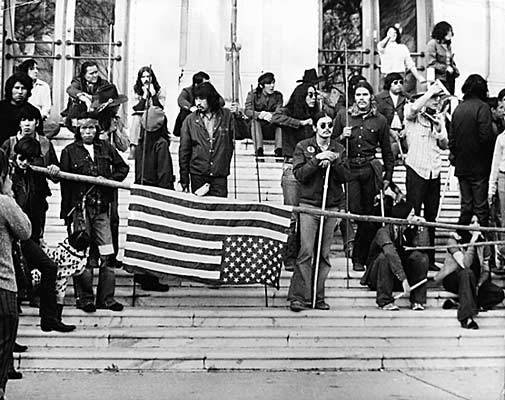



"The American Indian Movement remains based in Minneapolis with several branches nationwide. The organization prides itself on fighting for the rights of Native peoples outlined in treaties and helping to preserve indigenous traditions and spiritual practices. The organization also has fought for the interests of aboriginal peoples in Canada, Latin America and worldwide. “At the heart of AIM is deep spirituality and a belief in the connectedness of all Indian people,” the group states on its website."
#AIM#American indian movement#usa#politics#native sovereignty#tribal sovereignty#native rights#treaty rights#human rights#russel means#dennis banks#leonard peltier#native america#native#indigenous#ndn#BIA#bureau of indian affairs#colonialism#settler#settler colonialism#usamerican#liberals#progressives#leftist#ogala lakota#native pride#american history#native history#lakota history
1K notes
·
View notes
Text
For y'all to share that "United States of America has no conscience" quote by Kwame Ture the way y'all do, he'd be horrified by how a lot of y'all self proclaimed leftists treat Black people (yes, this includes Black Americans) and would not seek your solidarity. Same with Malcolm X, fr.
#Kwame believed that Black Americans are in internal colony of White America#yall would hate the ideologies of the Black people whose quotes yall pull out of context
571 notes
·
View notes
Text

#palestine#gaza#free palestine#free gaza#jerusalem#west bank#rafah#egypt#lebanon#yemen#iran#middle east#human rights#united nations#politics#colonialism#israel#america#biden
10K notes
·
View notes
Text
Read it again. Read it again. Read. It. Again.
Understand the gravity of this. This is genocide.
from Al Jazeera English, 13/Mar/2024:

“This war is a war on children. It is a war on their childhood and their future,” the head of the #UN’s Palestinian refugee agency #UNRWA Philppe Lazzarini wrote.
"Over 12,300 children were killed in Gaza between October 2023 and February 2024, the data shows, compared to 12,193 children killed in global conflict from 2019 to 202, Lazzarini has shared this data on X."
#this did not need to happen. but because of the colonial imperialist west foaming at the mouth to destroy everything innocents are killed#save the children#palestinian children#human rights#end israel's genocide#end israeli occupation#end the genocide#end the apartheid#end the occupation#israel is committing genocide#america is committing genocide#america is a terrorist state#this is genocide#palestine#free palestine#gaza#free gaza#from the river to the sea palestine will be free#i stand with palestine#rafah#save rafah
1K notes
·
View notes
Text
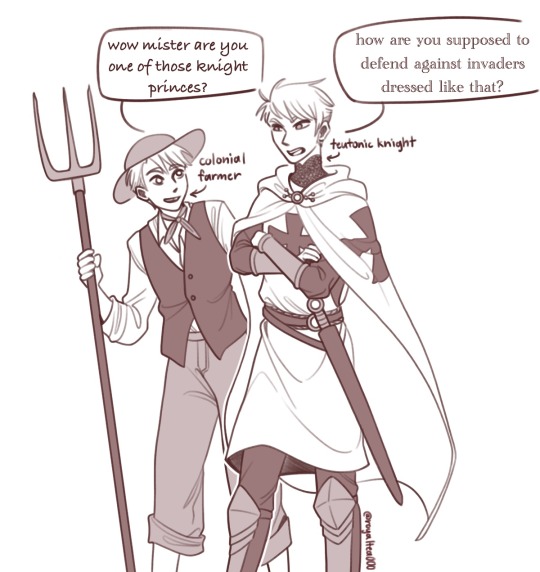
time slip
#listen I’m gonna tag this as historical hetalia#but it was an actual hassle looking up historically accurate colonial American clothing lmfao#all text and absolutely NO images 😭#gave al lil gap teeth :3#historical hetalia#hetalia fanart#hetalia#hws prussia#hws america#aph america#aph prussia#aph teutonic knights#hws teutonic knights#colonial america#digital art#my art#commissions open#artists on tumblr#fanart#procreate#pruame#amepru
512 notes
·
View notes
Text

#charlie kirk#usa is a terrorist state#usa news#usa politics#usa#american indian#american#america#amerikkka#amerika#ausgov#politas#auspol#tasgov#taspol#australia#fuck neoliberals#neoliberal capitalism#anthony albanese#albanese government#united states#unitedstateofamerica#unitedsnakes#united states of america#united states of whatever#united states of israel#unitedstatesofhypocrisy#colonialism#colonial violence#colonial history
311 notes
·
View notes